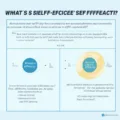Understanding Limiting Beliefs
We all have beliefs that shape how we see ourselves and the world around us. Many of these beliefs serve us by giving us a sense of comfort or familiarity. However, some beliefs actually limit us by setting expectations that we struggle to reach or making us feel unworthy.
These limiting beliefs often develop early in life through our experiences and interactions. Though they feel real and solid, limiting beliefs are opinions we have formed, not truths. By bringing awareness to them, we can begin loosening their grip.
Common Types of Limiting Beliefs
- I’m not good enough
- I don’t deserve success/love/etc
- I can’t do ____
- It’s too hard/risky
- I’ll always struggle with ____
We may consciously reject these beliefs, yet still hear their echoes. Exploring where they originated reveals how they gained power so we can start replacing them.
Overcoming Limiting Beliefs
Transforming limiting beliefs takes patience and self-compassion. Consider these steps:
- Notice the belief and how it makes you feel
- Question if it’s really true and useful
- Research evidence against it
- Affirm your strengths and worth
- Envision yourself beyond the belief
Replacing an old belief that no longer serves you with one aligned to your goals and values empowers you to show up as your best self.
When Limiting Beliefs Persist
If you’ve worked to challenge a limiting belief but it stubbornly remains, don’t lose hope. Our brains developed limiting beliefs as a protective mechanism. Letting them go requires rewiring our neural connections through consistent repetition of our new, empowering beliefs.
Enlist support from others who can remind you of your strengths when you slip back into old patterns. Progress happens one small step at a time, not overnight. Trust that the effort to overcome your limiting beliefs will be worth it.
FAQ
What causes limiting beliefs?
Limiting beliefs often stem from childhood experiences, cultural conditioning, trauma or difficult life events. We draw false conclusions about ourselves that feel true over time.
How do I identify my limiting beliefs?
Notice when you hesitate, doubt yourself or question if you “should” attempt something. Track the critical self-talk in your head. These reveal limiting beliefs that hold you back.
Can I overcome limiting beliefs on my own?
While support always helps, you can make progress challenging limiting beliefs through journaling, affirmations and envisioning yourself beyond them. Just take it slowly.
What keeps limiting beliefs in place?
The neural pathways keeping limiting beliefs alive are strong from years of reinforcement. They persist out of habit long after we consciously reject them. It takes deliberate effort to rewire our brains.
When do I know a limiting belief is truly gone?
You’ll feel the absence of the old belief rather than its transformation into something new. Getting rid of a limiting belief feels liberating as you open up to new possibilities.









